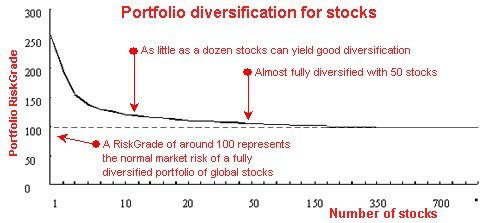

| Downloadable Materials | The Quiz Page | Course Home Page | Benchmark Portfolio | Giddy's Resource Page |
 This project is intended to make you an interested participant in the
financial markets, and so gain some understanding of the markets and of investment
decisions. You will use a trading simulation program, Stock-Trak, to manage
a portfolio that can consist of bonds, equities and/or mutual funds during
the course. The goal will be to beat a passive $500,000 portfolio
of 50% equities, 40% bonds, and 10% cash. Students will apply the concepts
learned in the course to select which bonds, stocks or mutual funds to buy
and which to sell, and to evaluate the relative performance of the portfolio.
This project is intended to make you an interested participant in the
financial markets, and so gain some understanding of the markets and of investment
decisions. You will use a trading simulation program, Stock-Trak, to manage
a portfolio that can consist of bonds, equities and/or mutual funds during
the course. The goal will be to beat a passive $500,000 portfolio
of 50% equities, 40% bonds, and 10% cash. Students will apply the concepts
learned in the course to select which bonds, stocks or mutual funds to buy
and which to sell, and to evaluate the relative performance of the portfolio.
For background, read Bodie, Kane and Marcus, Essentials of Investments, Ch 19 and Appendix A. Also Ch 11.
Rules of the Game
1. You have an initial $500,000 to invest in the securities of your choice.
The goal is to beat a passive benchmark portfolio
consisting of
| A note on bonds If you want to invest a certain dollar amount in particular bonds, you need to know the price. Stocktrak tells you which bonds are available for purchase on its "read the rules" section. You can find bond price quotes at bondsonline.com. This site enables you to quickly enter criteria (such as maturity in years for Treasurys, or the company's name for corporates) and get a price. |
What is Stock-Trak?
Stock-Trak is a Web-based investment
simulation program used by Finance students across the USA. It offers the
closest thing to real-money trading: gain experience without the pain.
How do I sign up?
Send in the registration form with a check or use a credit card to sign up
and start trading immediately at the Stock-Trak
Website. The cost is about $18.
What securities can we trade?
Students can trade any NYSE, AMEX or NASDAQ stocks with traded prices above
$5, a selection of government and corporate bonds, a large sample of the
most popular mutual funds, and a number of international stocks. In short,
the kinds of investments offered by a good US discount brokerage firm.
How, when and how often can we trade?
Stock-Trak offers several methods for students to place trades: Phone-call
to a broker, 24-hour voicemail, E-mail or fax. You can even put in your trades
in real time directly from the Stock-Trak Web trading pit
at a commission discount. Each account is limited to 60 trades for the term.
No odd-lot trades are permitted. No limit orders. You'll need to know the
ticker symbol of your stock or fund.
What are the costs of trading?
Basic commission cost is $50 plus $5 per 100 share lots of stock; $50
plus $5 per bond (par value of $1000); and 1% front-end load fee for mutual
funds, which must be taken in $500 units.
Can we margin up a position? Are short sales permitted?
Not at this point--let's keep the parameters reasonable at first. After the
midterm exam you can try it; the details may be found at the Stock-Trak Web Site.
Can we employ options, futures or other derivatives?
Again, after the midterm. Try to relate your portfolio to the course coverage.
See the the Stock-Trak Web Site for
information about futures and options.
What about cash distributions?
Your account will be credited for any dividends or coupons above $.50 or
stock dividends above 2%. Check Section C of the Wall Street Journal for
such announcements.
Does Stock-Trak provide summary information?
Every two weeks the investor in whose name the account is registered will
receive an account summary via mail or E-mail, if requested. The portfolio
will be valued on the basis of actual market prices. I will receive a summary
statement every week with a class ranking, which can also be found on the
Web.
Online Investment Help
Back to The
Course Home Page
More about